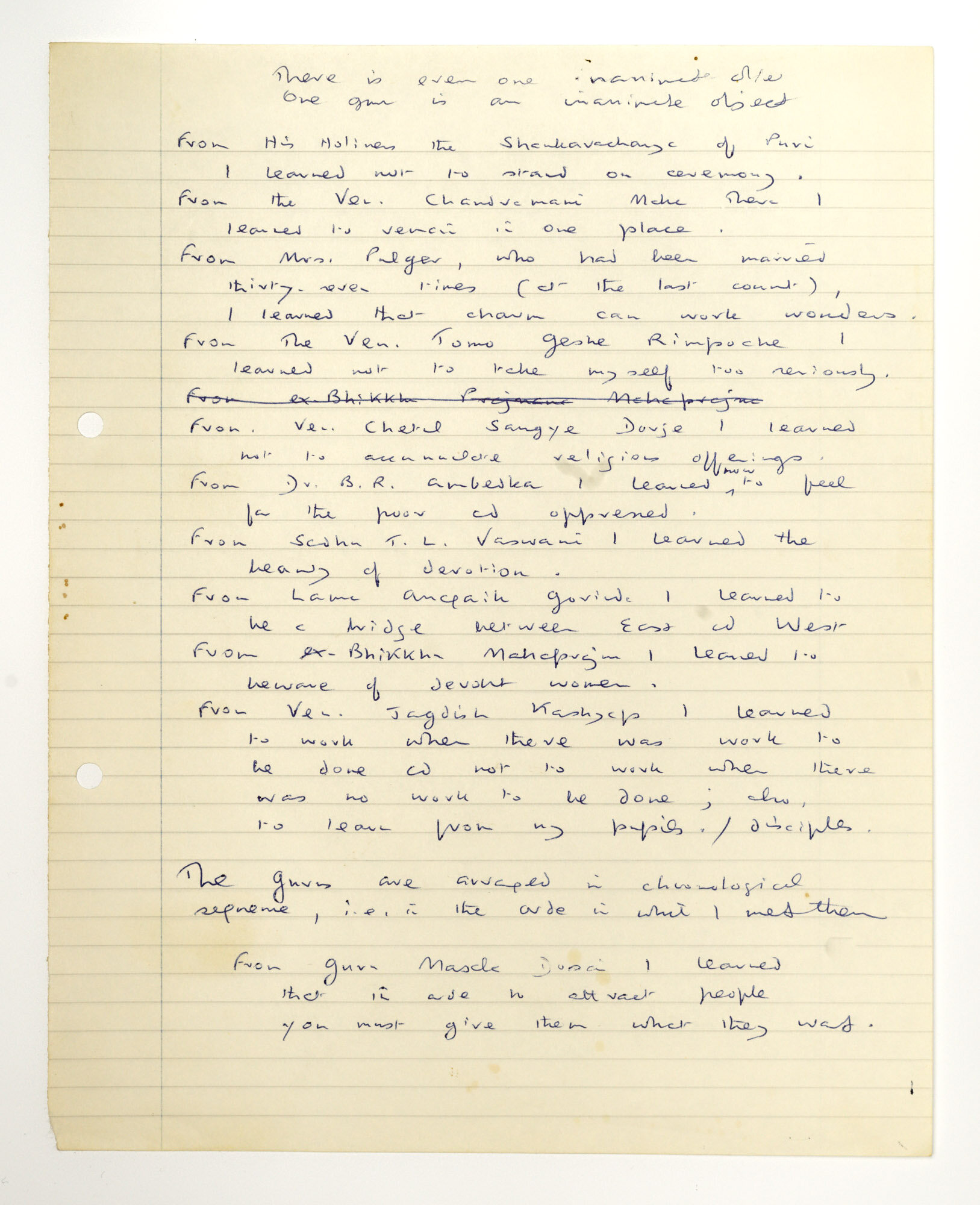Jagdish Kashyap (1908–1976) was born in Bihar, north India. Growing up, he was an unconventional figure, avoiding both westernisation and Hindu conventionality. He rejected caste and joined the Arya Samaj movement but found casteism was equally entrenched there. In education he gained a BA at Patna College and two MAs from Benares Hindu University. Wishing to learn Pāli, he left to study at a monastic college in Sri Lanka and in 1940 was awarded the degree of tipiṭakacārya. He was ordained as a bhikkhu in 1934 and became one of the main figures in the revival of Buddhism in India, translating many Pāli texts and organising the transliteration of Pāli texts into modern Indian devanāgarī script.
Bhante Sangharakshita was taken on as a student in 1949 when Bhikkhu Kashyap was Professor of Pāli at the Benares Hindu University. Sangharakshita studied with him Pāli, Abhidharma and Logic. Sangharakshita relates that it was due to their connection that Bhikkhu Kashyap gained the confidence to leave the university and support himself by his own begging bowl so that his life took a new direction. Sangharakshita’s life also took a new direction when Bhikkhu Kashyap took him to Kalimpong in the eastern Himalayas and told him to stay there and ‘work for the good of Buddhism’.
“Extreme corpulence gave him an air of mountainous imperturbability. At the same time, the expression of exceptional intelligence that played upon the strongly-marked features of the dark-brown face created an impression of vivacity, even as the look of gentle benignity that beamed from them seemed to invite confidence and trust.”
The Rainbow Road from Tooting Broadway to Kalimpong in The Complete Works of Sangharakshita, vol.22, p.395
The Abhidharma Philosophy by Jagdish Kashyap
This book, published in India in 1954, is the first of two volumes Jagdish Kashyap wrote on the subject. The volume compresses the Pāli Abhidhamma-piṭaka and Buddhaghosa’s Visuddhimagga into a series of aphoristic lines. It is a vivid exposition of the method adopted in the analysis and systematic grouping of things (dhammas) in the Dhammasaṅgaṇī, the first of the seven texts of the Abhidhamma-piṭaka. The book is still used as an introduction to Abhidhamma in Sri Lanka, Myanmar, Thailand and Indo-China.
Letter written by Bhikkhu Jagdish Kashyap
This letter written by Bhikkhu Jagdish Kashyap to Sangharakshita dated 15th August 1962 was recently found in the paper archives and is one of many precious letters waiting to be archived.
The final page of (unfinished) lines on ‘What I Learned From My Gurus’
While this exhibition concentrates on the inspiration from Sangharakshita’s main Buddhist teachers, it is very clear from these lines that throughout his life he has learned from a great variety of sources. Some are Hindu teachers, some are Buddhist, some are monastic, others not, most were male but some were female, and although most were older, one at least was twelve years younger. And although here he mostly celebrates just one thing that he learned from these teachers, we should not think that he only learned one thing. The list of gurus is not without a touch of humour if one notes the lines about Dr. George Roerich, Mrs Pilger and Guru Masala Dosai!





